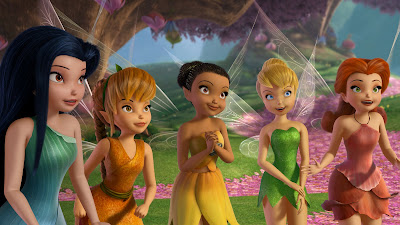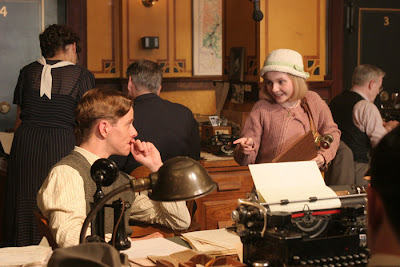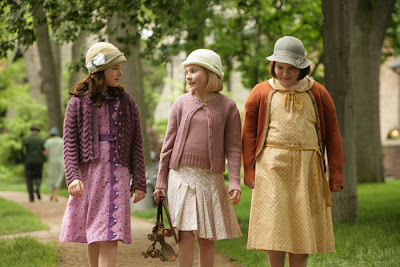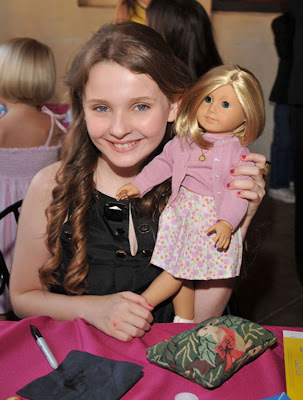


I could begin one of two ways-- with the phrase “open mouth, insert foot,” or by crafting an open letter of apology to Mr. Guy Ritchie. Ritchie, whose tendency towards ADD hyper cuts, cliched gangster speak, and Scorsese, Tarantino, and Coppola rip-offs evidenced in his last few films irritated me so much that the phrase Guy Ritchie-esque or Guy Ritchie-like has been used more than a handful of times in a negative connotation when critiquing hyper-stylized violent films of the last decade.
However, I certainly wasn't alone in my distaste for the overrated writer/director whom Americans just didn't get as much as the Brits (despite my enjoyment of
Lock, Stock and Two Smoking Barrels and the far too similar, redundant but entertaining
Snatch), especially considering that the horrific remake of
Swept Away starring his soon to be ex-wife Madonna was widely known to be one of the worst films ever made. Yet, after viewing his latest opus,
RocknRolla, I realized he's made his finest film since
Lock, Stock.
Yes, it's still filled with his uniquely hyper visual style but this time it works exceptionally well to add an impressionistic subconscious level to the film, bringing us deeper into the story such as when we see the events inside and outside a nightclub where a musician performs and junkies beat the bouncer or in one of the finest alternatively epic and ridiculous chase scenes of the last few decades of filmmaking (right up there with
Raising Arizona) as our anti-heroes led by Gerard Butler try to out-run, out-chase, and out-maneuver a group of Russians whom they'd just ripped off.
He fills an increasingly complicated plot with so many characters you fear that Ritchie should've supplied us with a cheat-sheet to keep them all straight, but luckily he adds at least one clever attribute to differentiate between the overwhelming lot whether it's the guy who always asks stupid questions or the one who likes Jane Austen movies, we're riveted by his attention to detail.
In a film that the press release reveals was inspired by the property boom occurring in London , Ritchie notes that he “wanted to take a humorous look at the consequences of the new school pushing in on the old school,” since he adds that “it goes without saying that because there's so much money involved, there are a lot of people taking advantage of the situation.” To this end, the film introduces us to several levels of players involved in the real estate market and those who are linked by mere association with the colorful group he creates.
The film is headed up by London's number one mobster and red-tape remover, Lenny Cole (the brilliant Tom Wilkinson) as the type of guy who argues that, “there's no school like the old school and I'm the f***in' headmaster." Of course, like all amoral kingpins, Lenny wouldn't be half the criminal he is without his sidekick, Archy (Mark Strong) who teaches his subordinates the art of the perfect face slap “to transfer” those they rough up back to their childhood. Additionally we're also introduced to the ambitious lower-level underworld group called “The Wild Bunch” (Gerard Butler, Idris Elba and Tom Hardy) looking to get into the property racket for themselves.
Thrown into the mix we encounter “the very gifted and financially creative” accountant Stella, played by Thandie Newton who sizzles with sex appeal (not to mention as a woman-- the miraculous ability to sashay her hips without breaking them with each entrance and exit). It seems that Stella's dull life crunching numbers and living with a gay husband sans children finds her all to eager to seek adventure among The Wild Bunch. Using confidential information from her newest client and Lenny's newest acquaintance, the Russian billionaire, Uri (Karel Roden), Stella interferes, leaking details of bags filled with unprotected cash to Butler's Wild Bunch.

Predictably, violence ensues, supplanted by both financial greed as well as the whereabouts of a much coveted painting which Uri travels with and lets Lenny take for a while in the hopes it will bring him luck. When Uri's lucky painting brings unlucky incidents to everyone whose hands it falls into as it changes owners and wall-space throughout the entire movie (although like the glowing briefcase in
Pulp Fiction-- itself an homage to
Kiss Me Deadly-- we're never quite sure what it looks like), all involved become desperate to track it down.
Also missing is Lenny's rumored-to-be dead junkie rocker nephew-- Johnny Quid (Toby Kebbell) who is not only alive but hiding out for maximum profits via the third erroneous “death report” of the year. Spending his days scoring dope, listening to Joe Strummer while his record sales skyrocket and avoiding his American music producers (Jeremy Piven and Chris “Ludacris” Bridges), Quid becomes embroiled in his uncle's scheme when the painting falls into his hands as well.
As producer Susan Downey aptly describes the situation in the press release, the film contains all of Ritchie's loved trademarks or more specifically “the eclectic mix of characters, the interweaving storylines that dovetail in ways you didn't see coming, the fascinating ensemble cast, the energy, the distinct visual style...But I also think it has an unexpected emotional layer and depth that I think sets this film apart.”
Similarly, I would add that there's a level of maturity and a tongue-in-cheek or rather less-pretentious air about the film than some of his “boys only club” pictures prior to this one as one character reveals his crush on Gerard Butler in a great, unpredictable scene and we meet a hoodlum who loves to watch Merchant Ivory productions like
The Remains of the Day while parked in the neighborhood in his SUV.
Balancing out the surprises is his love of shock and awe whether it's Ritchie's torture device involving American crayfish or poking gentle fun at his countrymen via a robbery so polite that Butler has no problem asking for the keys to a getaway vehicle. Likewise, he uses cinematic references throughout as one junkie unexpectedly misquotes Julie Andrews's much loved tune “The Sound of Music” with the phrase, “the streets are alive with the sound of pain.”
More tightly focused than Ritchie's recent work such as
Revolver which was so impossible to understand and over-the-top that I quit watching after only thirty minutes, it's more modern and relevant than his other work in depicting the current state of London as Ritchie described as “the middle of the world in the sense that it's often the last place you go on your way to America, and it's the first place you arrive before you get to Europe.” With a skyline “that's been altered beyond recognition,” as Ritchie continued in the press notes that “if you go to the top of any tall building all you can see are cranes... it looks as though the cranes are breeding...” he decided he wanted to portray the way the “Eastern Bloc nations have gained capital and influence... [thereby changing] the rules of business... [and] the rules of engagement.”

While of course, it's a humorous and off-the-wall look at the situation where extremes and exaggerations serve to up the entertainment ante, it's a much more fascinating scope for the picture from the point-of-view as an American, which is one of the things that turned Piven onto accepting the role as revealed in the release. Intriguingly, in a fictitious landscape of crooked businessmen, mobsters, rock stars, politicians, and thieves, ironically the most innocent characters are the two American record producers trying to get make a name for themselves in the music business who only serve as a gateway from one group of characters to another.
Fast-paced, highly energetic and inventively shot by multiple award-winning cinematographer David Higgis (
Cambridge Spies) and chopped by editor James Herbert (
Black Book and James Bond's
Die Another Day), the high-class look of the film is also aided by talented production designer Richard Bridgland (who began designing stage-work at American opera houses) and former graphic designer and fashion couture gown specialist Suzie Harman who was responsible for costuming the extraordinarily diverse cast.
Much better than I thought it would be-- intriguingly, this week finds two directors striving to return to form as Kevin Smith's
Zack and Miri fails to capture the humor and freshness of his 90's work and Guy Ritchie not only reminds us why we were drawn in by him in
Lock, Stock but also proves us how much he's grown.
A damn fine achievement and one where the ending reveals plans for a possible sequel, with a screen that names the characters still left standing who may return. Whether or not it's truly in the works is left to be discussed but if so, I for one am in the unique position of actually (for the first time ever) anticipating what's next from Mr. Guy Ritchie.
And man, I can't tell you how nice it is after years of studying film to be legitimately surprised by those who prove us wrong. A bloody-brilliant and jolly good show, as they say in England or as we'd probably say in the states, not only does it not suck but it also manages to kick a little ass at the same time.
Rock on, RocknRolla.


































